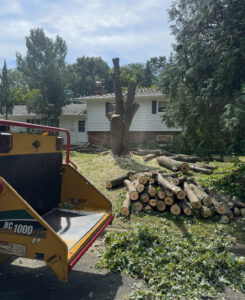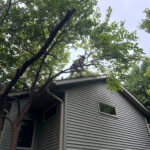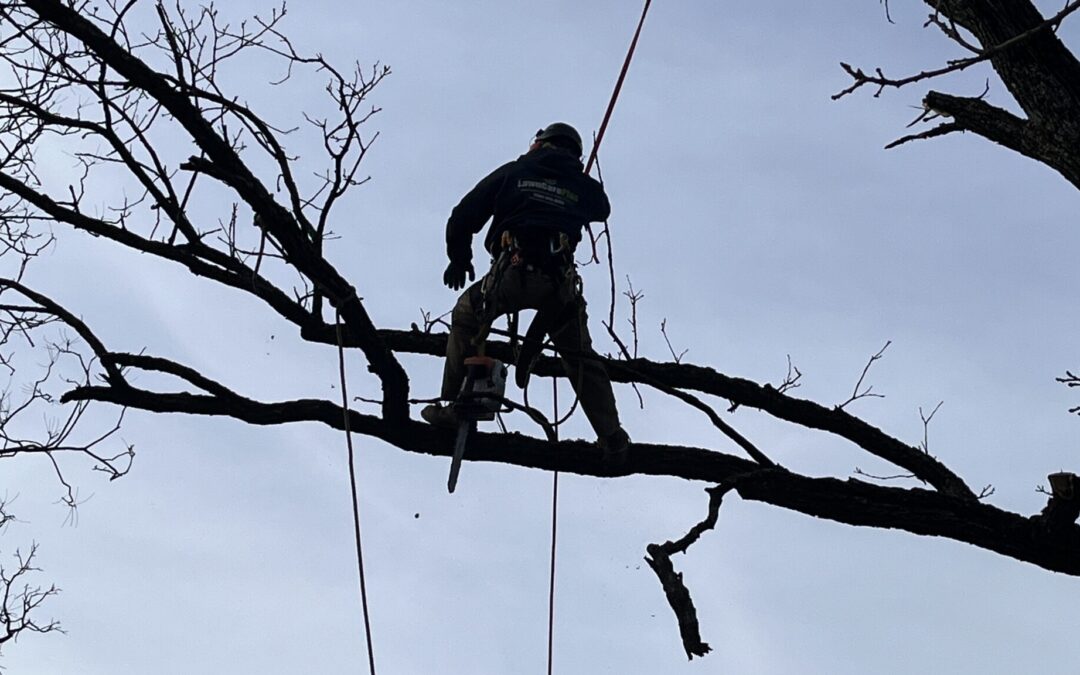As autumn settles in across the area, it’s easy to focus all your yard work on leaves and lawn cleanup, but October and November are also an excellent window for essential tree maintenance. Timely pruning and selective trimming now can improve tree structure, reduce hazards, and set your trees up for healthier spring growth. Here are a few key reasons why fall is the perfect time to give your trees some extra attention.
1. Prune to Remove Deadwood & Diseased Branches

- Why it matters: Dead, dying, or diseased branches are weak points in a tree’s structure. As winter storms, ice, or high winds arrive, they pose a risk of breaking off and damaging property or injuring people.
- Fall is ideal: With leaves off many trees, arborists can clearly see branch structures and identify deadwood more easily. Also, trees are entering dormancy, so pruning stress is often lower.
- Oak wilt prevention: Certain species, such as oaks, should only be pruned during the fall and winter dormant seasons to help prevent the spread of diseases like oak wilt. This destructive disease can spread through fresh pruning wounds during warmer months when insect activity is high, so cooler weather pruning is the safest option.
2. Provide Clearance from Roofs, Structures & Utilities

- Roof clearance: Low or overhanging branches near rooflines increase risks, from physical damage during storms to facilitating pest or animal access. A few well-planned cuts now reduce those threats.
- Structure clearance: Branches brushing walls, gutters, fences, or siding can cause abrasion and damage; trimming gives breathing room and protection.
3. Remove Low-Hanging Branches & Raise the Canopy
- Why raise the canopy: Lifting low branches improves sightlines, increases light penetration (benefiting lower plants and turf), and gives better airflow.
- Shaping benefits: Pruning lower limbs can help accentuate the tree’s “structure” and guide future growth, encouraging stronger main branches and reducing clutter.
- Balance is key: Don’t remove too much. Retain enough to maintain tree health, and avoid leaving large wounds.
4. Inspect & Plan for Pest, Disease & Winter Stress
- Inspection: Use this time to spot signs of decay, cankers, cracks, or insect damage that may worsen with winter stress.
- Mulching & root care: Refresh mulch rings to conserve soil moisture and shield roots from freeze/thaw cycles.
- Protection: Where appropriate, wrap or guard young trees against rodent damage or winter sunscald.
5. Timing Considerations & What to Avoid
- Don’t prune too early (e.g. late September): Leaves may still be present and obscure structure; some cuts could stimulate new growth at an inopportune time.
- Avoid pruning in very wet conditions: Excess moisture can promote fungal disease or decay in open wounds.
- Species sensitivity: Some trees (like maples, birches, walnuts) can “bleed” sap when cut in late winter or spring. For them, fall pruning is often more acceptable.
- Don’t overdo it: For many trees, pruning more than 25-30% of the live crown in a single year is risky.
Are you in need of expert fall care?
Hopefully these tips help you make your fall tree care decisions. If you’re unsure about moving forward on your own, contact us today for a free visit and seasonal pruning estimate. We’re staffed now and ready to help!
Also, if you’re curious about your rights and responsibilities between neighbor trees this fall, you can find more information in this blog.

